According to the interest rate tables announced by banks, 29 units have lowered their deposit interest rates from 0.1 to 1.05%/year following the direction of the monetary authority since the end of February.
The interest rate of 6%/year is very rare in the market. Vikki Bank (formerly DongA Bank) is the only bank that pays interest at this level for a 12-month term. At other banks, if you want to enjoy an interest rate of 6%/year, you only have to deposit for a longer term. The common interest rate for a 12-month term is currently from 5.1% to 5.6%/year.
11.4 trillion VND flows into the banking system in the first quarter of the year
Previously, in 2023 and 2024, commercial banks' deposit interest rates continuously increased to attract deposits. In 2025, in the first two months of the year, banks also started to increase interest rates.
However, as inflationary pressures are under control and monetary policy tends to loosen, banks have begun to reduce interest rates. This is assessed by securities companies to balance capital costs and promote credit growth.
This reduction is also considered the first time that banks have simultaneously reversed their interest rate reduction in nearly a year. In fact, this move took place after the Prime Minister directed "hot" inspections and examinations of banks that have increased deposit interest rates in recent times.
The head of the Government requested strict handling of violations and failure to comply with the directive. In particular, the Governor of the State Bank needs to consider and decide on the use of management tools on credit growth limits and license revocation according to regulations.
However, despite the continuous signs of decreasing interest rates, people's deposits in the banking system are still increasing. According to the latest data released by the State Bank, people's deposits at credit institutions by the end of February reached VND 7,366 trillion, up 4.26% compared to the end of 2024, setting a new record. Compared to the end of the previous month, people's savings deposits increased by VND 178,000 billion and compared to the end of last year, they increased by VND 301,000 billion.
The financial reports of the first quarter of 2025 of banks also showed positive deposits. The amount of customer deposits at most banks tended to increase in the first months of this year. Only 5 banks had a decrease in customer deposits: Vietcombank (down 0.4%), Techcombank (down 0.3%), TPBank (down 4%), ABBank (down 1.1%) and SeABank (down 4.9%).
All remaining banks in the market recorded an increase in deposit targets. Leading in terms of customer deposit balance are the state-owned "giants" with BIDV being the champion with nearly 2 million billion VND, followed by VietinBank with 1.62 million billion VND, Vietcombank ranked 3rd with more than 1.5 million billion VND.
In the group of joint stock banks, MB holds the leading position with more than 722,000 billion VND, an increase of 1.2% compared to the end of 2024. Next are Sacombank, VPBank, ACB, Techcombank, SHB... with customer deposit balance of over 500,000 billion VND.
In total, 27 banks had customer deposits of more than VND11.4 trillion, up 2.4% in the first 3 months of the year. Some banks had double-digit growth, including VPBank with an increase of 13.7%; Nam A Bank with an increase of 11.4%; KienlongBank with an increase of 11.8%...
Why do people still choose to deposit money in banks despite low interest rates?
Dr. Chau Dinh Linh, lecturer at the Banking University of Ho Chi Minh City, said that the State Bank's monetary policy orientation is to maintain low interest rates, supporting businesses and the economy after impacts such as the Covid-19 pandemic, Typhoon Yagi and most recently global trade tensions. From there, banks have appropriate adjustments to input interest rates.
Savings interest rates are currently uneven, depending on the product, term, and size of the bank. Larger banks have more liquidity, while smaller banks with liquidity pressure will have different interest rates.
According to experts, in general, current savings interest rates tend to be stable at the basic level, but medium and long-term interest rates tend to increase higher than short-term interest rates.
Traditional savings interest rates are not high, but still attract people's deposits due to safety and people's need to preserve capital.
Mr. Linh said that many people consider savings as a temporary channel, waiting for other investment opportunities with higher profit potential to appear. However, according to him, this is still a safe investment channel in the context of other investment channels having high risks or not being attractive enough in terms of profit.

Although savings interest rates are low, there are still many reasons why people choose to deposit money in banks (Photo: Manh Quan).
Mr. Nguyen Quang Huy, Executive Director of the Faculty of Finance and Banking, Nguyen Trai University, commented that in the context of a sharp decrease in interest rates and low levels, the amount of people's deposits in the banking system continues to grow steadily because banks are still considered a safe destination for the majority of people.
“When the main investment markets (real estate, stocks, gold, personal businesses, etc.) all show signs of instability, people tend to prioritize capital safety over expected profits. The banking system in Vietnam is still a safe and transparent place to keep assets, protected by strict risk control policies from the State Bank,” said Mr. Huy.
Mr. Huy also pointed out that the market lacks alternative investment channels with real appeal.
Regarding the real estate channel, according to Mr. Huy, real estate prices in many cities have been high for many years, causing the total investment for each product to often range from several billion to tens of billions of VND. This is a major financial barrier, preventing most people, especially the middle and lower middle classes, from accessing this channel. In addition, liquidity is still slow, legal issues are not consistent, and buyers are still hesitant.
Regarding the stock market, although the market has improved in terms of indexes, cash flow is still tentative. Investors are waiting for clear signals from the market upgrade, along with sustainability in macro management and improved quality of listed companies. In particular, concerns related to the US's reciprocal tax policy on goods from Vietnam and developing countries have also made foreign capital flows and domestic investors more cautious.
As for the gold and foreign currency channels, according to the expert, the gold price is currently at a record high, fluctuating strongly according to international factors. Meanwhile, investment in foreign currencies is still limited by foreign exchange market management policies and exchange rate risks. These channels are more suitable for risk prevention than long-term profitable investment.
Which channel should I invest in?
Mr. Nguyen Quang Huy commented that the market still has many investment channels, but the major weakness is that no channel is clearly attractive in terms of yield, liquidity and safety.
According to him, real estate is only suitable for people with large and long-term capital. However, there are still opportunities for professional investors to hunt for assets with clear legal status, good locations, and being sold at a loss in the current period.
Meanwhile, the stock market is assessed to have medium- and long-term potential, especially when the market upgrade roadmap is accelerated, helping to attract foreign capital. However, in the short term, risk factors from trade tensions - tariffs and global financial policies (especially from the US) are creating a defensive sentiment in the market.
Other indirect channels such as fund certificates, guaranteed corporate bonds, or investing in professional real estate funds are also being considered, but require investors to have in-depth understanding of the product and the issuer.
According to Mr. Huy, people with low risk appetite can continue to maintain a high savings ratio, while participating in safe financial products such as certificates of deposit, top corporate bonds, or open-end bond funds.
Medium- and long-term, experienced investors should start restructuring their portfolios, taking advantage of stock market corrections to invest in businesses with solid financial foundations, stable dividends, and industries with potential in global trends such as clean energy, digital transformation, digital finance, and high value-added export manufacturing.
"The current interest rate level has approached the short-term bottom, reflecting the State Bank's controlled loosening of monetary policy to support growth, while still ensuring exchange rate stability and controlling inflation. However, if credit recovers strongly in the second half of the year, or exchange rate pressure increases due to the US Federal Reserve (Fed) delaying interest rate cuts, savings interest rates may be adjusted slightly upward from the fourth quarter to balance currency supply and demand," Mr. Huy commented on interest rate trends.
Source: https://dantri.com.vn/kinh-doanh/vi-sao-tien-gui-vao-ngan-hang-van-lap-ky-luc-du-lai-suat-thap-20250528115050412.htm




![[Photo] Prime Minister Pham Minh Chinh receives leaders of Excelerate Energy Group](https://vphoto.vietnam.vn/thumb/1200x675/vietnam/resource/IMAGE/2025/5/29/c1fbe073230443d0a5aae0bc264d07fe)
![[Photo] Prime Minister Pham Minh Chinh attends the event "Digital transformation of the banking industry by 2025"](https://vphoto.vietnam.vn/thumb/1200x675/vietnam/resource/IMAGE/2025/5/29/0e34cc7261d74e26b7f87cadff763eae)









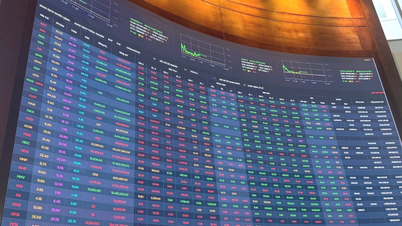









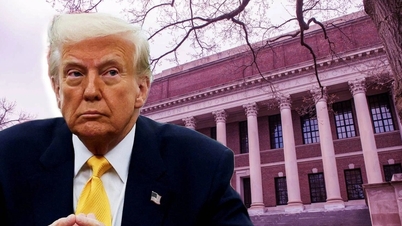
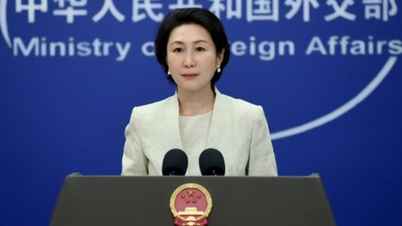



























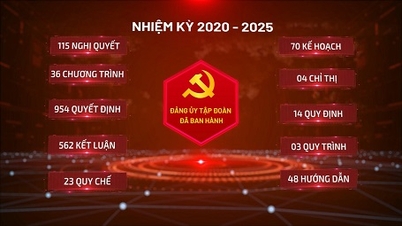













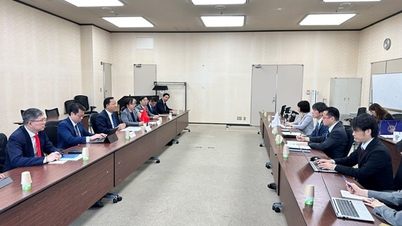




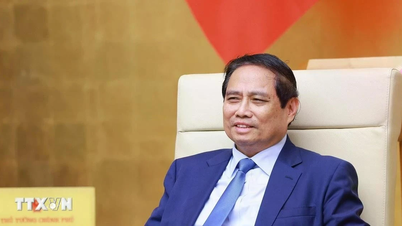






















Comment (0)